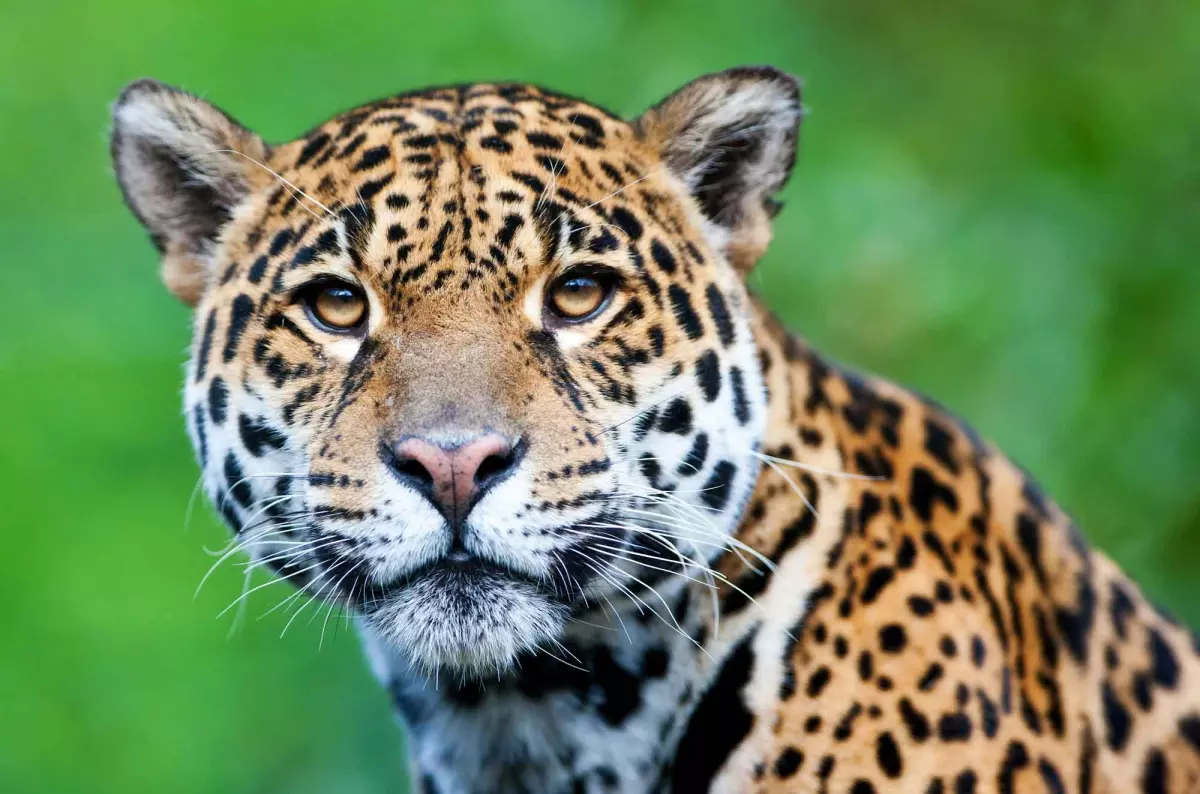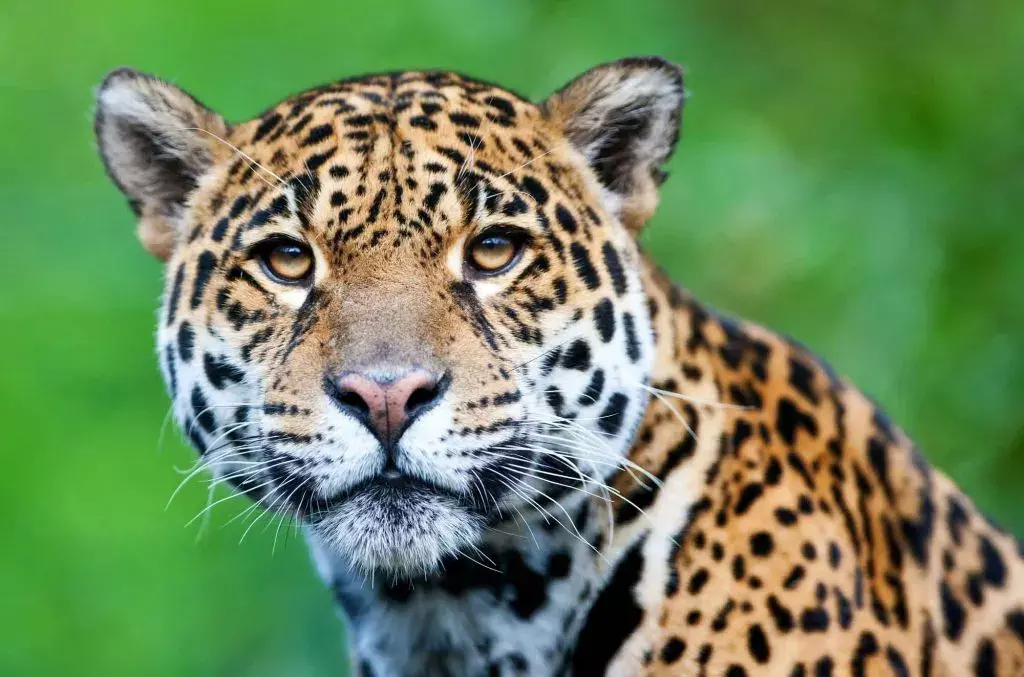 The powerful jaguar
The powerful jaguar
Introduction
Jaguars, worshipped as gods in ancient South American cultures, are the true kings of the Amazon Rainforest. These powerful cats command respect with their regal presence and awe-inspiring abilities. In this article, we will delve into the world of jaguars, exploring their appearance, habitat, behavior, and more. Get ready for a wild journey into the realm of the mighty jaguar.
Jaguar: Panthera Onca
The jaguar, scientifically known as Panthera Onca, is a compact, slender, and muscular animal. It boasts a unique pale yellow to tan-colored coat adorned with dark rosette spots. Its sides and underbelly are lighter in color, while the rosette spots vary in shape and pattern. Jaguars living in forested areas are usually darker and smaller than those in open areas. They have a distinctively robust build, with sturdier limbs and squarish heads compared to leopards.
 Jaguar walking on a grassy area
Jaguar walking on a grassy area
Jaguar Range & Habitat
Jaguars are the largest wild cats in the Americas, and their range extends from the southwestern region of the United States through Mexico and Central America to South America. Although they once roamed vast territories, jaguars have been eradicated from 40% of their historic range and are now extinct in Uruguay and El Salvador. They are primarily found in South America's rainforests, with the Brazilian Amazon Rainforest serving as their stronghold. Jaguars prefer living in dense forests, including dry deciduous, tropical, and subtropical regions. They are often found near rivers, lakes, or wetlands, as they are exceptional swimmers.
Jaguar Behavior and Lifestyle
Jaguars are mainly active during the night and twilight hours. However, those residing in the Amazon Rainforest tend to be more active during the day. Solitary creatures, jaguars mark their territory using scrape marks, urine, and feces. Female jaguars live with their cubs, forming the only exception to this solitary lifestyle.
Jaguar Diet
As apex predators, jaguars occupy the top of the food chain. Their diet primarily consists of flesh from various animals. They are known to hunt wild animals such as capybara, giant anteaters, marsh deer, and southern tamandua. Jaguars near rivers or floodplains also hunt reptiles like turtles and caimans, using their sharp canines to tear through tough shells and skin. In the absence of wild prey, jaguars may even target cattle and other livestock. Their powerful bite allows them to deliver a direct fatal blow to the brain or suffocate their victims.
Jaguar Reproduction and Mating
Female jaguars reach reproductive maturity at around 2.5 years of age. They can reproduce throughout the year, but the birth rates vary seasonally, with most cubs being born during the rainy season. Mating involves vocalizations and temporary associations between males and females. Females give birth to litters of up to four cubs, which are born with closed eyes and open them after two weeks. The cubs stay hidden in their mother's den for up to six months and accompany her on hunting trips before eventually venturing out on their own.
Jaguar Conservation Status
Jaguars are currently classified as "near threatened" due to various threats they face. While they fear no other wildlife as apex predators, jaguars are threatened by habitat loss, illegal poaching, and the trade in their body parts. The increasing demand for jaguar parts, fueled by Chinese investment in Latin America, exacerbates these threats. Deforestation, particularly in the Amazon, poses a significant risk to their survival.
Jaguar Facts
To wrap up our exploration of the jaguar, here are some fascinating facts about these magnificent creatures:
- The name "jaguar" comes from the South American indigenous word "yaguar," meaning "he who kills with one leap" or ferocious beast.
- Jaguars are exceptional swimmers and are often found near bodies of water, unlike other big cats.
- Their roar, resembling the sound of sawing wood, serves as a mating call or a way to greet each other.
- South American jaguars are larger than their Central American counterparts.
- Jaguars possess an incredibly strong set of jaws, capable of piercing through tough shells and cracking skulls.
- The Pantanal region in Brazil is the best place to spot jaguars, especially during the dry season.
- The oldest known jaguar, Micica, lived until the age of 29 years and six months in the ZOO Osijek in Croatia.
Let us appreciate and protect these majestic creatures to ensure their continued existence in the wild. The jaguar's reign as the king of the Amazon Rainforest depends on our commitment to conservation efforts.

















